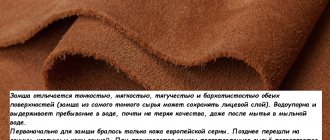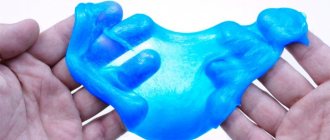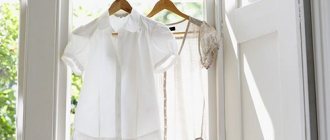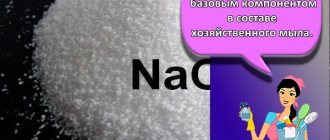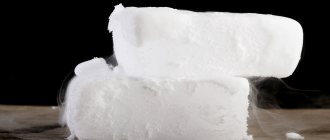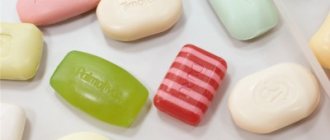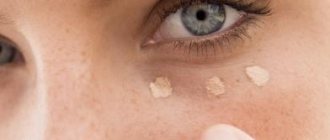There are many types of materials for sewing, both artificial and natural.
But there is a material that is synthetic, but is natural. This is viscose, which is called cotton or natural synthetics, artificial silk.
This is a very interesting material, which is obtained from natural components using an artificial method. In this article we will try to figure out what kind of material this is - viscose fabric, what it is made from, whether it is natural fabric or not (synthetic), how to wash it correctly.
When and how did viscose fiber appear?
The first attempts by English scientists to learn how to create artificial fibers similar to natural silk can be dated back to the 17th-18th centuries. This process was long and not always successful. English chemists were truly lucky at the end of the 19th century when they managed to improve the process of making fiber from recycled wood pulp and obtain a new fabric.
They came up with a name for it - viscose (viscosus in Latin means sticky, viscous). Apparently, because the raw material for its production was a viscous thick mass obtained from processed wood. The manufacturing technology has been patented. And it is still used in almost the same form today. Since 1892, first England and then other countries began producing viscose.
Story
Viscose fiber is artificially derived from natural cellulose. Translated from Latin, viscosus means sticky. The first process for producing viscose fibers was described by J. Mercer in the 40s of the 19th century. The beginning of the application of production technology in industry belongs to E. Schweitzer and dates back to 1857. In 1892, the Englishmen Beadle, Cross and Bevin were able to obtain viscose fiber industrially. In France, at the beginning of the 20th century, J. Brandenberger patented the production of cellophane. In 1902, the process for producing viscose (artificial silk) was patented.
In the Soviet Union, the production of viscose began in the late 20s of the twentieth century.
How is viscose thread produced and what is it made from?
The raw material for the production of viscose is a substance that is found in large quantities in wood. This is cellulose - a natural material. Under the influence of chemicals, natural raw materials are transformed first into fiber, then into threads and fabric.
Main technological processes:
- Wood raw materials are cleaned, crushed into small chips, boiled at high temperature in an alkali solution and excess water is removed.
- The resulting base mass is passed through special holes in the plate, and they fall into a container with acid. The process produces cellulose fibers that are spun into short and long strands.
- Then they are dried, bleached, and pressed.
- They are sent to weaving factories where viscose threads are created and dyed.
Depending on the method of processing raw materials in industry, several different types of viscose fibers are obtained, which differ in appearance from each other. In terms of properties, they are largely the same.
- Textile - from them the thinnest threads are obtained, from which textiles are made.
- Staple - wool is spun from short strands of the same length, warm clothes are sewn, carpets are woven, and fur is obtained.
- Technical - used for the production of durable and dense cord materials.
- Untreated viscose fiber is made into felted products.
Manufacturing technologies
Making artificial textiles is a long process. It consists of several stages:
- Grinding solid wood and dissolving in alkali to obtain a brownish solution.
- Cleansing and bleaching of the resulting composition.
- Treatment with carbon disulfide, dissolution in sodium hydroxide.
- Passing the mass through plates with holes (dies). The solution flows out in small streams and falls into a bath of sulfuric acid, after which it is transformed into thin threads.
- Treatment of the resulting fibers with a soap solution to reduce rigidity, drying and forming into bobbins.
- Twisting of threads into yarn, from which fabric is woven on looms or machines.
An alternative technology for the production of fabric based on the solvent N-methylmorpholine-N-oxide has also been developed. The material is produced using this method by the English company Courtaulds. It was first used in 1992. The result is textiles with increased strength parameters and enhanced shine, resistant to staining: dyes penetrate deep into the structure of the fabric and retain color intensity for a long time. But the license to produce viscose is expensive, so the method is not widely used in other countries.
Additional operations
Adjustments are sometimes made to traditional technology, which makes it possible to obtain fabric with additional characteristics. The following is added to the raw materials:
- Surfactants and modifiers - to enhance the strength of the fabric;
- matting reagents - to get rid of glassy, unnatural shine;
- dyes – for uniform coloring and color stabilization of viscose.
When squeezing the viscose mass through dies, a by-product was completely accidentally obtained - a thin film, known today as cellophane and widely used.
Is viscose a natural fabric or not?
To answer this question, you need to remember the classification of textile raw materials - any types of fibers (natural and chemical) that are suitable for processing.
Natural ones are animal wool, silkworm threads, raw materials of plant origin (linen, cotton).
Chemical – what is obtained as a result of processing various types of raw materials with chemicals. In turn, they are divided into synthetic fibers obtained from various organic substances (for example, polyester from polyester fibers), and artificial fibers, which are obtained by processing natural raw materials (rubber, casein fibers from milk, viscose from cellulose).
Based on this, viscose is an artificial fiber obtained from natural raw materials - wood cellulose. From this point of view, the fabric can be considered natural. But at the same time, special chemical solutions are used in production, that is, it is obtained artificially. Therefore, viscose is sometimes called natural synthetics.
Historical reference
Viscose was invented back in 1884 by the French engineer Ilie de Chardonnay. A talented scientist was searching for new possibilities for creating artificial threads with certain properties and qualities. But for a number of reasons, a patent for the technology was received by English chemists C.F. Cross and E. D. Bevan in 1893. And the very next year they opened an enterprise where they successfully implemented the new method. The new technology was highly appreciated by the famous Russian chemist D.I. Mendeleev.
Viscose gained real popularity and recognition only 100 years later. Textile enterprises began producing products from viscose fabrics on a large scale.
Composition and types of viscose fabrics
The general name “viscose” refers to several types of fabrics with different characteristics. Their physical and mechanical properties depend not only on processing methods and the method of fiber formation, but also on the composition of the raw materials used in production.
Natural 100% viscose resembles silk in appearance - translucent, soft, shiny. Its properties vary depending on the raw materials used:
- Modal is a fabric made from 100% cellulose obtained from high-quality wood without the use of any harmful impurities or chlorine. Due to the special weave of the fibers, the material has many of the qualities of cotton. Clothes and bedding are made from it.
- Siblon is a textile fabric that is very popular among consumers. Durable, does not wrinkle, does not shrink when washed, and is relatively cheap. The raw material used in its production is coniferous wood.
- Bamboo - this raw material produces a fiber that is as similar in properties as natural cotton.
- Tencel (lyocell) - the raw material is eucalyptus fibers processed into cellulose. The fabric is distinguished by antiseptic properties, special strength, and hypoallergenic. It breathes well, does not wrinkle, is soft and silky. It is mainly used to make bedding and clothing.
- Acetate is produced from cellulose waste. It looks like silk. But due to the fact that the fabric is not hygroscopic, fragile in structure, and does not allow air to pass through, it is used mainly as a lining material.
- Cupra is a decorative silky fabric with good thermoregulation and breathability. Difficult to produce: it is obtained from cellulose treated with copper sulfate and ammonia. Evening dresses are made from it. Clothes made from this fiber are difficult to care for.
- Staple – made from short fibers. Due to this, the fabric is almost not deformed, its structure is elastic. Classic staple (or mixed) is most often made from cotton and viscose in equal proportions. This fabric makes excellent summer dresses, sundresses, children's clothing, and men's shirts. The disadvantages are that the material wrinkles and shrinks.
- Viscose silk is an artificial analogue of natural fabric, obtained from viscose fiber. Externally, the fabric is similar to satin, chiffon, crepe. Sometimes elastane is added to the composition. Inexpensive and fashionable clothes are made from it. The material is quite dense, light, beautiful, flowing. Items made from it are easy to care for.
Artificial, synthetic, and natural fibers added to viscose fabric in most cases improve its properties. When combined with cotton, it becomes more durable and strong. When adding elastane, it becomes elastic.
Types of mixed fabrics:
Viscose with cotton - the union of these two fibers, without compromising the hygienic properties of natural fabric, increases its strength and improves its appearance. But material with added cotton may shrink when washed.
Viscose with polyester (polyviscose) - this soft dress fabric, plastic, durable, form-fitting, is obtained by combining artificial viscose and synthetic polyester. A small percentage of elastane can be added to the blended fabric. Dresses, outerwear, decorative textiles with beautiful draperies, and suits are made from it.
Viscose with elastane - this additive makes non-plastic viscose fabric elastic and increases its stretchability. This fabric is used to make sportswear and women's clothing.
Viscose knitwear is a fabric that is pleasant to the body, light, soft, elastic, drapes beautifully, has moderate stretch, but does not stretch, and almost does not wrinkle. It is used for sewing sweaters, children's clothing, T-shirts, both monofilament and as part of other fabrics.
Viscose lining is made entirely from viscose fabric or with the addition of cotton and polyester. Smooth, durable fabric that does not deform when worn, absorbs moisture well, glides, and serves as an ideal lining material for sewing hats and outerwear.
Quilted viscose is a two-layer fabric from which light blankets, home textiles, quilted jackets, and dresses are sewn.
Crepe viscose is a cotton-like fabric that is pleasant to wear and drapes well. All types of this fabric are slightly rough to the touch due to a special technology for twisting the threads in the fabric.
Other products
This natural synthetics is used in different areas of our lives:
- sewing casual and sportswear for women, men and children, both summer and winter assortment (T-shirts, turtlenecks, dresses, blouses, skirts, sweaters and fleece pants);
- household (napkins and rags for cleaning, washing windows and dishes, for caring for furniture and household appliances. These napkins are very popular because they can be used without the use of special cleaning products);
- home textiles (curtains, tablecloths, towels, bedspreads, bed linen, carpets);
- sewing outerwear (as lining fabric);
- needlework (embroidery threads).
In order for any item to serve for a long time, it requires high-quality care . How to properly care for clothes made from natural synthetics?
Advantages and disadvantages
There are many varieties of viscose fabric. And its characteristics are, first of all, determined by its composition. If we focus on the fact that it is 100% viscose, obtained entirely from wood cellulose without the addition of other natural or synthetic additives, its main properties are as follows:
- Softness and pleasant tactile sensations when in contact with the skin.
- The ability to drape beautifully.
- Regulates heat exchange: it’s comfortable in hot weather, and you won’t freeze in cold weather.
- Not electrified.
- Viscose fabric is lightweight - it weighs half as much as cotton.
- Absorbs moisture well.
- Durable.
- Does not fade and colors well.
- Does not irritate the skin.
- Easily decomposes after use - no conditions are required for its disposal.
There are also disadvantages:
- Consumers are often interested in whether this material wrinkles or not. Yes, viscose wrinkles a lot. And this is one of the disadvantages of 100% viscose fabric. But at the same time it is easy to iron.
- Requires special care. If washed incorrectly, clothing made from it can become deformed: shrink or stretch - fabric when wet can change its properties if it is not handled properly.
- Burns out in the sun. When ultraviolet radiation hits fabric, it destroys its structure, causing clothes to wear out faster.
Many of these disadvantages can be eliminated if other fibers are added to the fabric during the manufacturing process.
Comparison of artificial viscose with other fabrics
Which is better, cotton or viscose? In both cases, it is a light, “breathable” material that is pleasant to the touch and absorbs moisture well. But cotton fabric is more durable. And both in dry and wet conditions. While the structure of wet viscose is subject to faster destruction, deformation and wear.
If you compare viscose with wool, things made from natural animal raw materials are warmer.
Polyester and viscose are often compared. But these are completely two different types of fibers. Viscose, obtained from natural raw materials, can be equated in properties to natural hygroscopic and breathable fabrics. The same cannot be said about polyester. It does not “breathe”; it is uncomfortable in both summer and winter.
But synthetic fabric is easier to care for. It is more durable and not afraid of moisture. This property is important to consider, for example, when choosing a carpet. Viscose carpet, which does not tolerate moisture, should not be placed in rooms with high humidity.
Application for sewing workwear
Workwear must be safe, hygienic and comfortable for workers, and protect from harmful influences. In its production, a mixture of viscose with other fibers is often used. To provide additional characteristics, as well as to facilitate maintenance and extend service life, the resulting fabrics are impregnated with special compounds.
One of the best blended fabrics for workwear is considered to be one that contains 47% viscose and 53% cotton, as well as a mixture of 65% polyester and 35% viscose . The products fit perfectly, have the necessary hygienic properties and elasticity. Used for sewing uniforms for medical, banking, and office workers.
Flight attendants, conductors, salespeople, and hotel staff work in workwear made from viscose materials. This clothing is ideal for indoor work . Due to good fit, clothes look elegant, and employees have a pleasant appearance.
Many workers are recommended to wear viscose underwear under their uniform. It has an antistatic effect, so the uniform fits the worker perfectly. When fabrics are treated with special compounds, workwear acquires additional characteristics, such as increased strength, resistance to dirt and wrinkles , as well as water-repellent and breathable properties.
In addition to sewing workwear, viscose materials are used quite widely. Where else can you find products using these fibers?
What is sewn from viscose
Products made from viscose occupy a significant part of our wardrobe. It could be:
- Home textiles.
- Different types of clothing for women and children: dressy, casual, home.
- Bed sheets.
- Underwear.
Viscose with the addition of polyester is used as lining material. Unprocessed viscose fiber is used to make toys. Viscose threads are used by embroiderers. The material is used for sewing shoes. Carpets are woven from viscose yarn and sweaters, hats, and scarves are knitted.
You can sew romantic, beautiful things from light, airy, perfectly draping viscose. Seamstresses love working with this material. Although cutting and sewing will require certain skill and experience: the material is mobile, easily moves when cutting, and the sections fall off. When sewing yourself, you need to process the cuts with an overlocker and make wider allowances.
How to care for viscose
You need to wash, dry, and iron viscose clothes carefully and gently. And she will serve her term without losing her appearance.
Wash
It is better to do this manually or in a washing machine using the “gentle wash” mode. Water temperature – no more than 30 degrees. It is advisable to use mild detergents for delicate fabrics.
Spin
When washing by hand, the product should not be twisted, rubbed, or squeezed hard. When washing in a machine, you need to use a spin cycle at low speeds or exclude this process from washing altogether.
It is recommended to dry items in a dryer, spread out, away from heating appliances and away from direct sunlight.
Ironing
Iron on the minimum setting or setting the “silk” setting. Do not spray with water or steam using the steam function of the iron. But you can treat clothes with a steam generator by hanging them on hangers.
What else are consumers interested in?
- Does viscose stretch or not?
100% viscose has very little stretch. The elasticity of matter is 2-3%. To increase this parameter, elastane is added to the fiber. However, if viscose clothes are dried vertically, they may stretch.
- Do pellets form on the surface of the material?
With proper care, even after numerous washes, the fabric does not pill.
- What composition does viscose shrink with?
100% viscose fabric does not shrink or stretch when washed if things are handled with care when wet. But viscose with additives can behave differently.
For example, if the fabric contains threads of cotton or wool, the material, taking into account their natural properties, may shrink when washed. In addition to shrinkage, cotton makes the fabric wrinkle. Polyester causes pilling to appear on clothes.
To avoid these troubles, you need to familiarize yourself with the designations on the clothing label and the composition of the fabric.
- How to determine whether there are viscose fibers in the fabric?
The easiest way is to pull a thread from the fabric and set it on fire. Viscose thread flares up with a strong and bright flame and burns quickly. In this case, a characteristic smell of burnt wood or paper appears. Synthetic fabric takes a long time to melt.
- What to do if your favorite dress becomes two sizes smaller after washing?
Pro tip: if a viscose item shrinks, you need to wash it again on a delicate cycle in the machine or by hand.
Reviews
Judging by the reviews, people have different attitudes towards viscose:
Nina, 29 years old
“Weightless, soft children's T-shirts for the summer, just what you need. The baby doesn’t sweat in them even in the hottest weather.”
Olga, 55 years old
“You can’t really wear something made of viscose. It quickly fades, stretches, and feels like synthetic on the skin.”
Lyudmila, 38 years old
“Viscose pleases with its naturalness. I love curtains based on it. They flow, drape beautifully, create coziness, and look great.”

